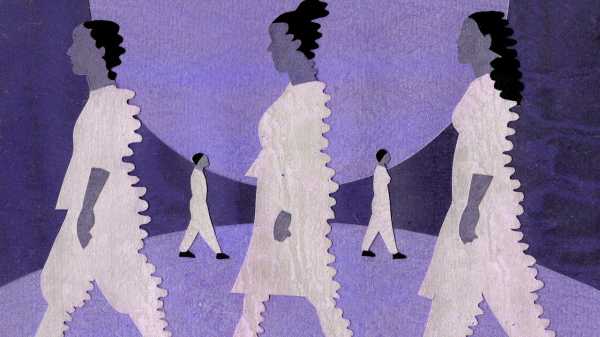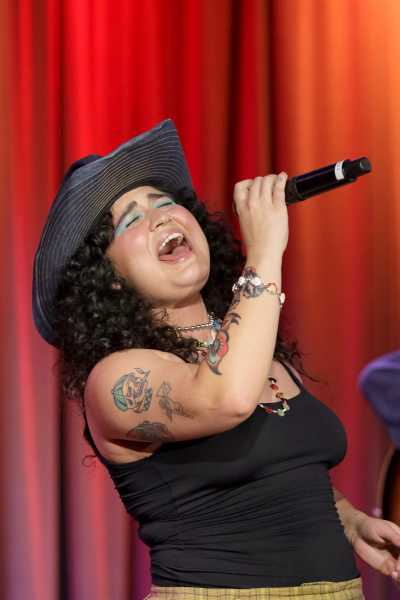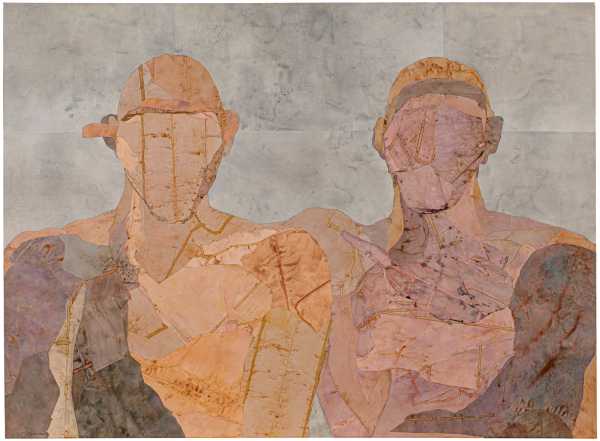
Save this storySave this storySave this storySave this story
Hilton Als
Staff writer
You’re reading the Goings On newsletter, a guide to what we’re watching, listening to, and doing this week. Sign up to receive it in your in-box.
The ever-astonishing eighty-one-year-old vocalist, composer, theatre-maker, and performer Meredith Monk comes from a family of voices—four generations of singers—or one voice. Her mother was a talented commercial singer on the radio, but Monk chose a different way to make sound. As a student at Sarah Lawrence, in the nineteen-sixties, Monk, who sang, too, began making work that was sound-based. Her focal point has always been the voice, and she has done brilliant work around breathing and repetition, while forging a path that stripped theatre of distracting artifice to get at its essence: what moves us as our bodies move in space.

Illustration by André Derainne
Monk has created “Indra’s Net” (at the Park Avenue Armory, Sept. 23-Oct. 6), which takes its title from a Buddhist metaphor for infinite interconnectedness. The piece includes sixteen vocalists, a sixteen-piece chamber orchestra, and two video installations, all of which is meant to emphasize our interdependence. It’s an example of the kind of collaboration that Monk has continued to create over sixty-odd years, emphasizing the joy and the necessity of the collective, the sweet and enlivening feeling of your comrade’s breath grazing your neck and changing your interior landscape with its presence, and silence.

About Town
Off Broadway
Enjoy the lighthearted opening minutes of “Our Class,” featuring singing schoolchildren (played by adults) in interwar Poland, because what follows is a parade of horrors. Tadeusz Słobodzianek’s play, adapted from the Polish by Norman Allen, tracks ten classmates—five Jewish, five Christian—over eight decades, as they betray, kill, and, on occasion, protect one another. (It’s the females, notably, who do most of the protecting.) The frenetically inventive director, Igor Golyak, and his ensemble cast don’t shrink from the historical atrocities they dramatize, even staging multiple rapes. The audience is a different story; some members left during intermission when I attended. Yet many who stayed seemed to admire the production’s unflinching gaze, delivering an impassioned ovation. How fitting that a show about what turns people against one another should polarize its viewers.—Dan Stahl (Classic Stage Company; through Nov. 3.)
Dance
Lecture, film anthology, autobiography-by-proxy: the Crossing the Line Festival entry “Jérôme Bel (2021)” is all of these at once. Bel, a French choreographer who produces work that hovers at the crossroads of dance and memoir, no longer travels, for ecological reasons. So this autobiographical stroll through his past creations—he calls it an “auto-bio-choreography”—is narrated, in person, not by Bel himself but by the actress April Matthis. As Matthis reads Bel’s musings from a device, film clips and performances roll by: a monologue conceived for Véronique Doisneau, of the Paris Opera Ballet; a reënactment of Isadora Duncan. The whole thing is as cozy as a fireside chat, and as artificial as a hall of mirrors.—Marina Harss (Florence Gould Theatre; Sept. 27-28.)
Pop

Photograph by Rebecca Sapp / Getty
Remi Wolf is pretty far off from the typical pop artist’s trajectory, and even further from a centrist sound. A junior Olympic skier and “American Idol” reject with a prickly voice and a snarky disposition, the Palo Alto native studied music at U.S.C. before committing to a style she dubbed “funky soul pop,” going viral on TikTok, in 2020, with the groovy and absurd single “Photo ID.” “Juno,” the major-label début that followed, seized the moment with haywire hits that seemed to bounce off the walls of a synth fun house. In July, she returned even more self-assured with her second album, “Big Ideas,” which displays the indisputable chops of a sharp and amusing songwriter who is as quirky as she is crafty.—Sheldon Pearce (Kings Theatre; Sept. 30-Oct. 2.)
Opera
War and romance have long been central characters in opera, whether they stand stately at the forefront of the plot or churn not so silently in the background. Opening week of the Met Opera’s new season features both sides of the enduring dichotomy, with “Grounded” and “Les Contes d’Hoffmann.” The former follows a fighter pilot navigating an unplanned pregnancy, and the latter a fictionalized E. T. A. Hoffmann living out love-filled plots based on his own short stories. Both spotlight machinery, one boasting a drone, the other a female automaton. “Tosca”—in which both war and romance are dialled up to the max—is also playing.—Jane Bua (Metropolitan Opera House; begins Sept. 23.)
Art

“Formal Informal Double Portrait,” from 1976.Art work by Nancy Grossman / Courtesy Michael Rosenfeld Gallery
Nancy Grossman and Romare Bearden, the co-stars of “Collage in Dialogue,” began to work in the medium in the early sixties and spent the next few decades pumping out hits, trading tips as they went along. Attention-grabbers came more naturally to Bearden: you can feel him thinking in color as he builds hot, jangly crowd scenes where stillness has never set foot. Grossman likes softer, more shimmery compositions that tend to feel like landscapes, whether or not they actually are. Put them together and you’ve got a comprehensively twentieth-century American kind of show, moving without strain from exuberant to anxious to alienated to trippy. It could have been twice the size and I wouldn’t have complained.—Jackson Arn (Michael Rosenfeld; through Nov. 2.)
Movies
The remarkable series “Personal Belongings: First-Person Documentary in the 1990s” takes its title from the opening-night feature, by Steven Bognar—about his relationship with his father, who participated in the Hungarian Revolution of 1956 and perpetuated the revolutionary spirit three decades later. Also notable is Lourdes Portillo’s “The Devil Never Sleeps,” her ardent investigation into the death of a favorite uncle, in Mexico, that was first ruled a suicide and then a heart attack. In the family’s home town of Chihuahua, Portillo uncovers a pathos-filled story of a self-made businessman who was owed money, who was unhappily married, and who may have been blackmailed over rumors about his sex life. Blending journalistic research with trenchant reflections, Portillo unfolds a passionate family saga with a novelistic scope.—Richard Brody (Museum of the Moving Image; Sept. 20-29.)

Pick Three
The staff writer Michael Schulman seeks out alternative glamour.
1. Since her Koch-era blowouts at the Copacabana, the party hostess Susanne Bartsch has been the Swiss Miss of New York night life. Drag queens, Harlem voguers, and scenesters would dress up in outrageous outfits for her bacchanals—but Bartsch, in rhinestoned bodysuits and sky-high wigs, would usually upstage them all (and still does). A new coffee-table book, “Bartschland,” captures her decades of fabulosity, with appearances by RuPaul, Michael Musto, Amanda Lepore, and the gym impresario David Barton, whom Bartsch married in 1995.
2. At the top of my watch list for this year’s New York Film Festival, at Lincoln Center Sept. 27-Oct. 14, is Luca Guadagnino’s latest, “Queer.” Drawn from the 1985 William S. Burroughs novel, it follows an American junkie (Daniel Craig) who becomes infatuated with a younger man (Drew Starkey) in postwar Mexico City. Have we even recovered from Guadagnino’s last erotic hand grenade, “Challengers”? This one promises less tennis and more heroin.

Photograph by Ethan James Green / Courtesy the artist / Kapp Kapp
3. Ethan James Green has a dual career as an upscale fashion photographer (he just shot Lady Gaga for the cover of Vogue) and a chronicler of the queer demimonde. His new portrait collection, “Bombshell,” at the Tribeca gallery Kapp Kapp (through Oct. 26), is a seedy subversion of the glamour shot, featuring many of his favorite muses, among them the trans glamazons Hari Nef and Dara Allen, as they writhe in platform heels, swing from traffic lights, or chill on fire escapes. It’s a throwback to Andy Warhol’s downtown, and proof that the city’s presumed-dead counterculture is very much alive.
P.S. Good stuff on the Internet:
- From the creator of “S-Town”
- Theodore Roosevelt National Park ranger lewks
- An appreciation of vermouth
Sourse: newyorker.com